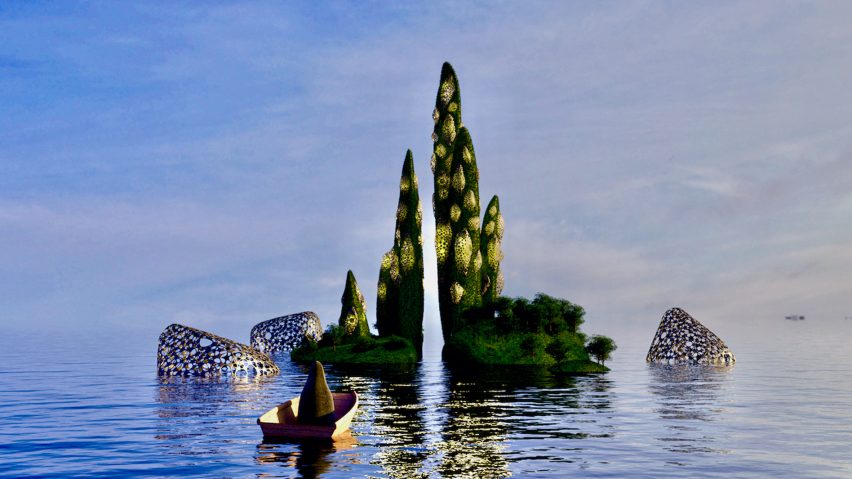
Ten architecture and urban design projects by UIC Barcelona
Dezeen School Shows: a self-sufficient tower built on a beach in Barcelona is featured in Dezeen's latest school show by students at UIC Barcelona.
Also included is a series of biomaterials that can be 3D printed and a mixed-use scheme in the Poblenou neighbourhood of Barcelona that emphasises sustainability.
UIC Barcelona
Institution: UIC Barcelona
School: School of Architecture
Tutors: Alberto T Estévez, Yomna Abdallah, Maria I Gabarró, Iñigo Ugalde, Carmen Mendoza Arroyo, Allison Koornneef, Lorenzo Chelleri, Valeria Rijana, Pere Vall Casas, Marta Benages and Álvaro Cuéllar
School statement:
"UIC Barcelona School of Architecture stands as a pioneer in Barcelona, being the first private institution of its kind in the city.
"Over two decades, it has evolved into a hallmark of quality education in the field. Our mission is to cultivate architects with an international outlook, critical thinking skills and a passion for societal engagement.
"Through personalised support and a focus on innovation, we prepare our students to navigate the challenges of the future. Committed to both our students and society, we offer a comprehensive curriculum that includes mandatory courses in cooperation, sustainability and accessibility.
"Our dedication to contemporary architecture extends beyond the classroom, as we foster close collaborations with industry leaders and provide ample opportunities for real-world experience.
"Located within our expansive Barcelona Campus, our state-of-the-art facilities offer everything from spacious lecture halls to cutting-edge workshops, ensuring that our students have access to the resources they need to succeed.
"Join us at UIC Barcelona School of Architecture and embark on a journey to shape the future of architecture."
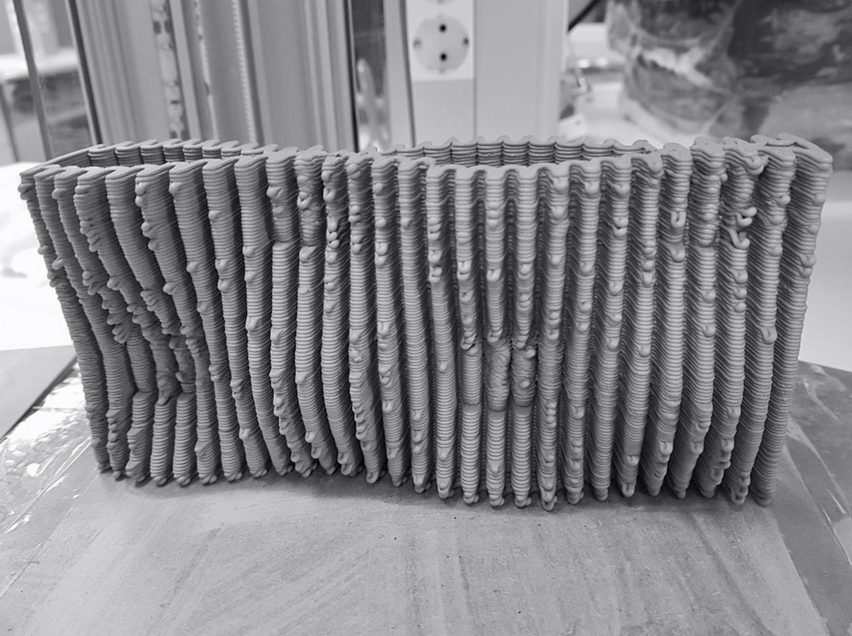
Developing biosystems and biomaterials by Daniel Amani and Skander Bouzein
"This project aimed to develop biosystems and biomaterials to produce bio-catalysed functional products including bioelectricity, food, enzymes and materials.
"Research was conducted within the BioLab, where the students learn basics of biotechnology, including culturing of useful non-pathogenic microorganisms including algae, bacteria and edible fungi.
"The BioLab integrates the latest technology in biological processes in the design process including every type and scale of 3D printing with various materials, from clay to engineered living materials."
Students: Daniel Amani and Skander Bouzein
Tutor: Professor Yomna K Abdallah
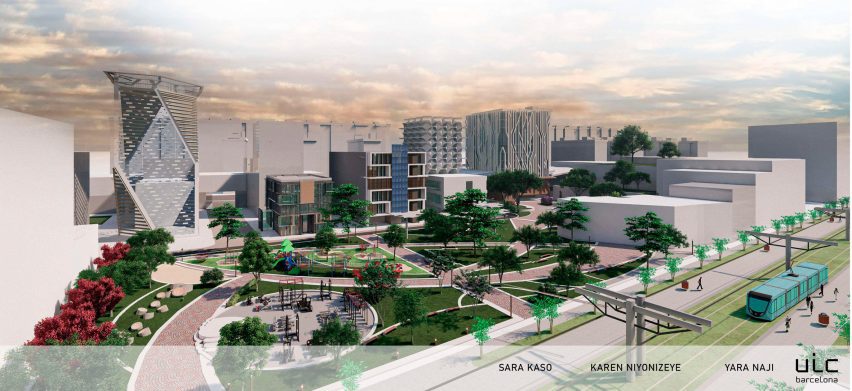
VitalSpaces - Rethinking Urban Health: Streetscapes Built for Life by Karen Niyonizeye, Sara Kaso and Yara Naji
"The design of healthy cities is based on the creation of sustainable and self-sufficient environments that minimise waste generation.
"The cities of the future must be resilient spaces, capable of meeting the needs of their inhabitants without compromising the wellbeing of future generations.
"VitalSpaces implements strategies that promote energy efficiency by reducing consumption through the use of renewable energies, responsible water management and promoting sustainable mobility."
Students: Karen Niyonizeye, Sara Kaso and Yara Naji
Tutors: Pere Vall, Marta Benages and Álvaro Cuéllar
Emails: niyonkaren[at]gmail.com, sarakaso31[at]gmail.com and yara.n99[at]live.com.
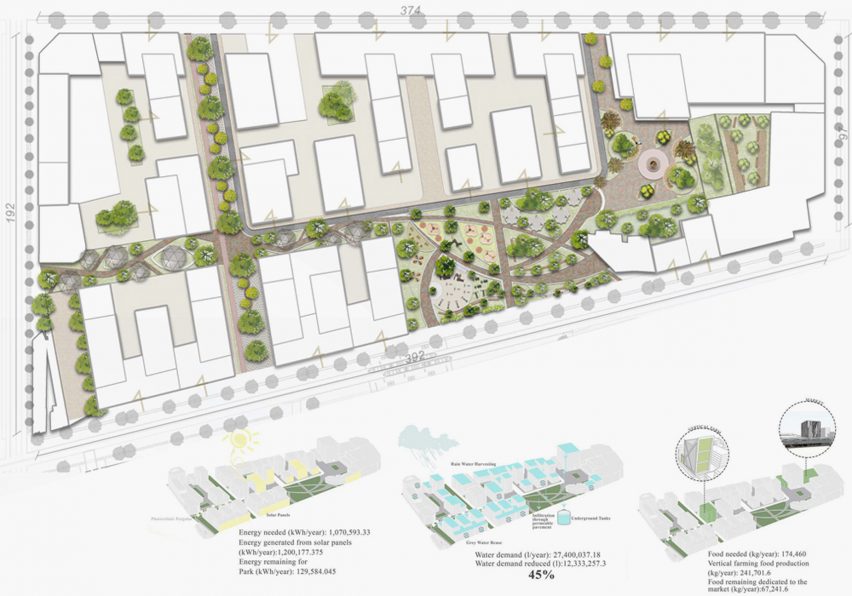
EcoUbia: a green, technological and sustainable urban community in Barcelona by Fathimath Shahyn
"EcoUbia stands as a visionary urban project that redefines the concept of urban living – it is developed in three blocks located in Poblenou, a neighbourhood in Barcelona.
"This transformative urban microcosm integrates residences, stores, offices and facilities, creating a space where technology, sustainability and human wellbeing blend in perfect harmony.
"Residents will enjoy shared green spaces, urban gardens and an innovative agricultural centre that encourages local production and responsible consumption."
Student: Fathimath Shahyn
Tutors: Pere Vall, Marta Benages and Álvaro Cuéllar
Email: fshahyn[at]gmail.com

Alternative Housing Processes: Collective Action in the city of Barcelona by Georgia Manousogiannaki
"Manousogiannaki analyses alternative housing production in her research paper in contrast to the traditional, speculative practices that increase and perpetuate unequal access to housing.
"The formation of urban gardens, cooperative housing, alternative economies and consumer cooperatives all introduce new approaches t0 the urban fabric.
"Her thesis points out the necessity for these alternatives as a tool for new urban development through the lens of the de-growth movement.
"Studying the case of housing alternatives in Barcelona, the research aims to map the urban patterns in the city that led to these collective transformations."
Student: Georgia Manousogiannaki
Tutor: Emilio Hormías Laperal
Email: zp094739[at]uic.es
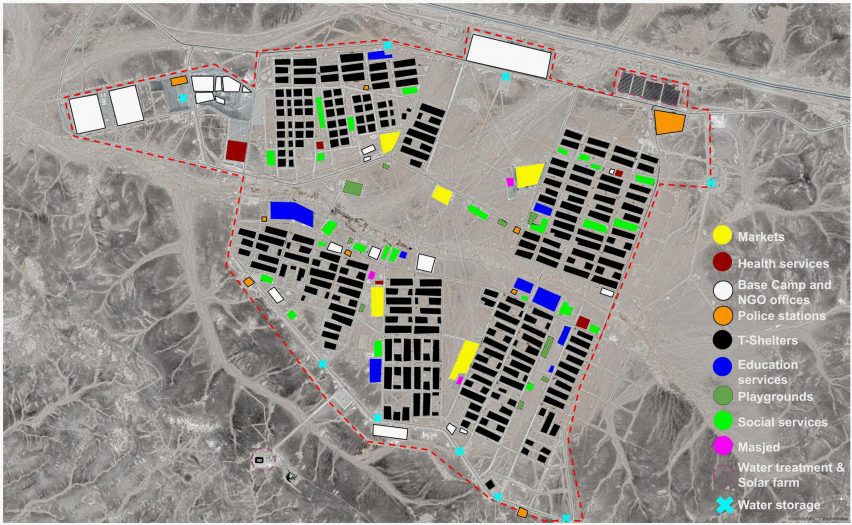
Assessing Disaster Risk Reduction in Refugee Camp Design in Jordan by Abdel Rahman Ghalib Al Zoubi
"Rapid population increases in Jordan as a result of the migration from neighbouring countries have put a strain on existing social and urban infrastructures.
"The need to mitigate disaster risk is essential to protect the most vulnerable, whether that is in informal urban settlements or emergency planned camps.
"The findings from this research show that refugee camp design parameters do not adequately integrate disaster risk reduction strategies, specifically in the informal camps, and argues that including the local knowledge of disasters from the initial stages would improve sustainable urban upgrading and improve their preparedness and risk mitigation profile."
Student: Abdel Rahman Ghalib Al Zoubi
Tutor: Dr Carmen Mendoza Arroyo
Email: abdelrhmanzoubi[at]uic.es
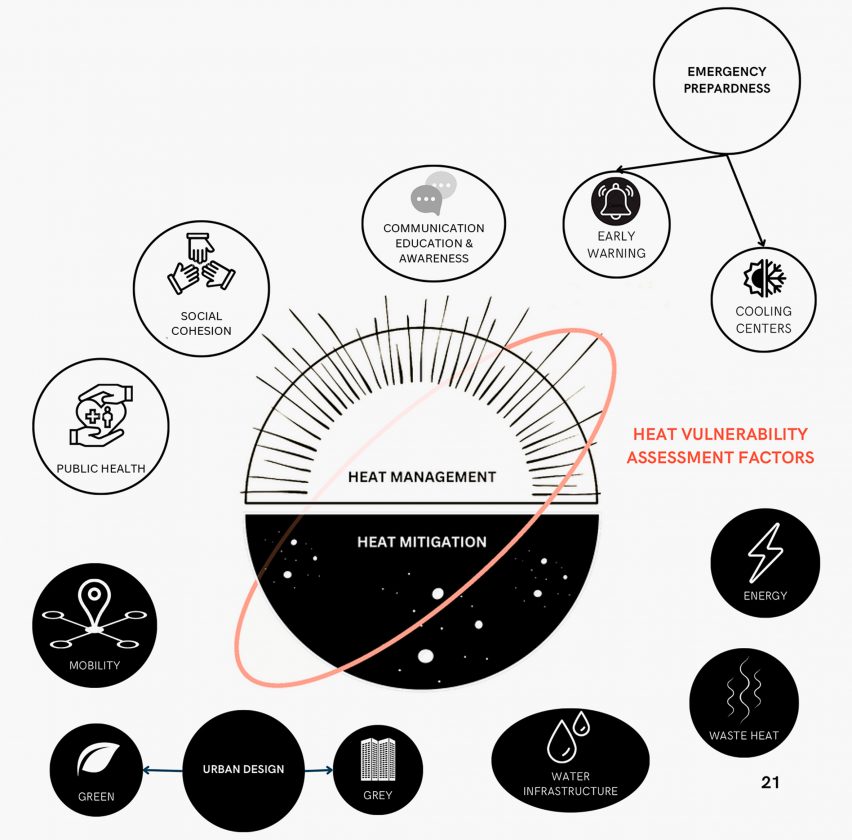
Group project: A Heatwave Resilience Roadmap for the City of Sitges
"Using a multidisciplinary approach, the focus of the workshop was to present guidelines relating the heatwave emergency response with longer-term integrated planning and governance resilience strategies.
"Students undertook multiple site visits, engaging with both the community and key technical staff of the Municipality of Sitges in order to understand the current situation.
"Our mission was to create a framework for resilience to heat and prepare a roadmap whereby Sitges can further understand the vulnerabilities of the community and work towards a long-term resilience strategy."
Students: Rose Dagg, Louise Demortier, Koen Dobbelaar, Federica Lisa, Armando Natingue Jr, Mara Owen, François Dubreuil, Manhoor Fatima, Darina Hyun, Claudia Laumans, Mrinal Patil, Cato Pos and Mailin Walther
Tutor: Lorenzo Chelleri
Emails: mkowen18[at]gmail.com, alice.bazzica[at]gmail.com, f.dubreuil[at]hotmail.fr, bertrand.grimm[at]hotmail.com, armandojnatingue97[at]gmail.com, louisedemortier[at]hotmail.fr, catopos[at]icloud.com, walther.mailin[at]t-online.de, koen.dobbelaar[at]gmail.com, mahnoor.fatima11[at]outlook.com, federicalisa[at]gmail.com, mrinalpatil510[at]gmail.com, rose.dagg[at]live.com.au, darinagesheva[at]gmail.com, claudia[at]clccompany.nl, erika.sbarbati[at]gmail.com and varma.aditya97[at]gmail.com
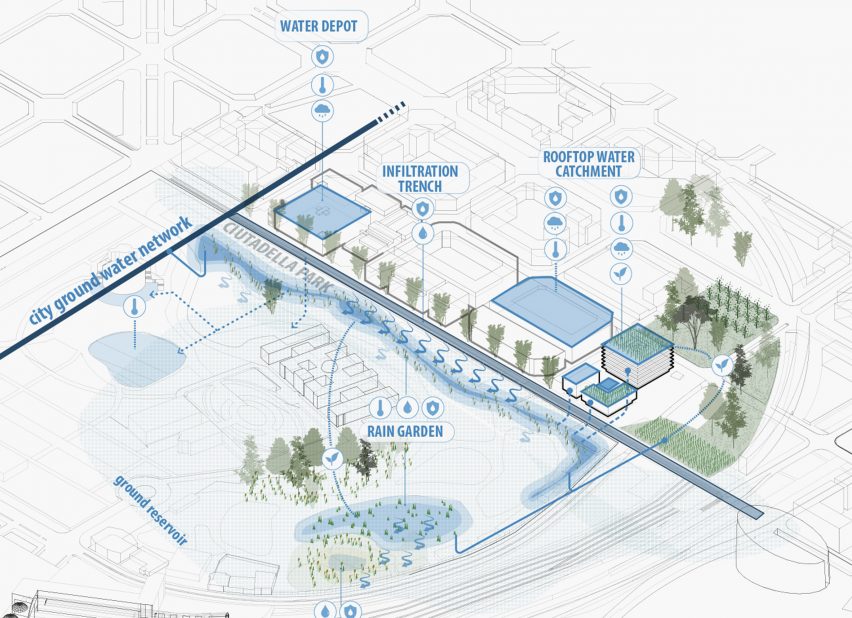
Group project: Towards a Resilient Ciutadella Knowledge Campus
"This report aims to propose robust strategies in response to Pompeu Fabra University's request for designs for a development at the Ciutadella campus in Barcelona, Spain.
"The workshop focused on key questions: how should resilience be integrated into campus planning, design and management? And, how can sustainability extend beyond technological aspects, addressing the district scale and surpassing new campus buildings?
"Additionally, it explores how a campus can actively contribute to and lead a city district, fostering culture, knowledge, quality of life and equity.
"Specifically, it delves into the UPF Campus' potential role in implementing the knowledge district and enhancing the overall urban environment."
Students: Allison Ahern, Elena Luongo, Federico Villar Silva, Jared Sluss, Jhade Azzougagh, Małgorzata Kamińska, Manon Dangelser, Marli Roberts, Maxime Pierson, Nelson Nolan, Rafael Sosa, Rima Alsammarae, Steph O’Connor and Valeria Rijana
Tutor: Lorenzo Chelleri
Emails: allisonahern1[at]gmail.com, ralsammarae3[at]gmail.com, j.azzougagh[at]gmail.com, manon.dangelser[at]hotmail.com, luongo.ele[at]gmail.com, malgorzata1117[at]gmail.com, nnolan[at]ualberta.ca, steph.k.oconnor[at]gmail.com, piersonmaximejp[at]gmail.com, valrijana[at]gmail.com, marli.roberts[at]gmail.com, jaredsluss[at]gmail.com, rsosa9496[at]gmail.com and fedevillars[at]gmail.com
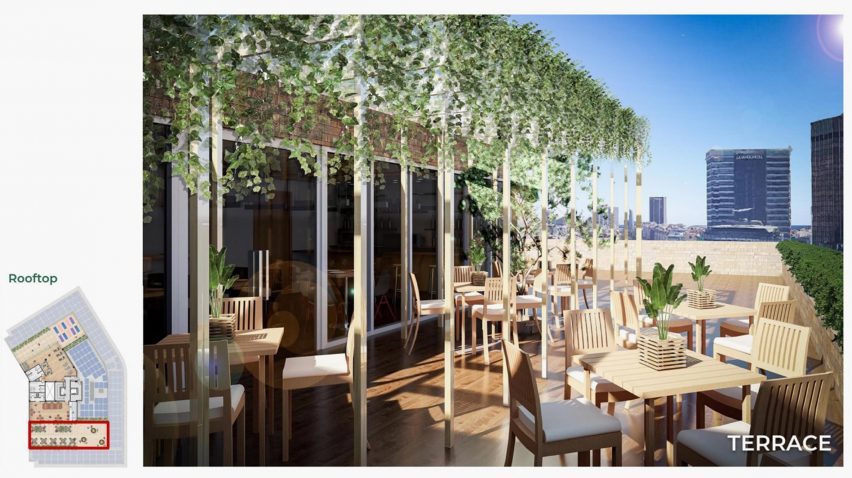
Designing living, breathing headquarters by Carlos González, Cindy Susantino, Elisa Estrada and Mahmoud Ghoussainy
"The living building challenge was established by the International Living Future Institute, a team of green-building experts and thought leaders committed to creating resilient, living systems that are healthy, vibrant and beautiful, but that also strengthen local economies and communities.
"Because of that, the project aims to create a well-rounded working space based on sustainable and human wellness-oriented design."
Students: Carlos González, Cindy Susantino, Elisa Estrada and Mahmoud Ghoussainy
Tutors: Architect Maria Isabel Gabarró, David Moreno and Gabriel Rocafort
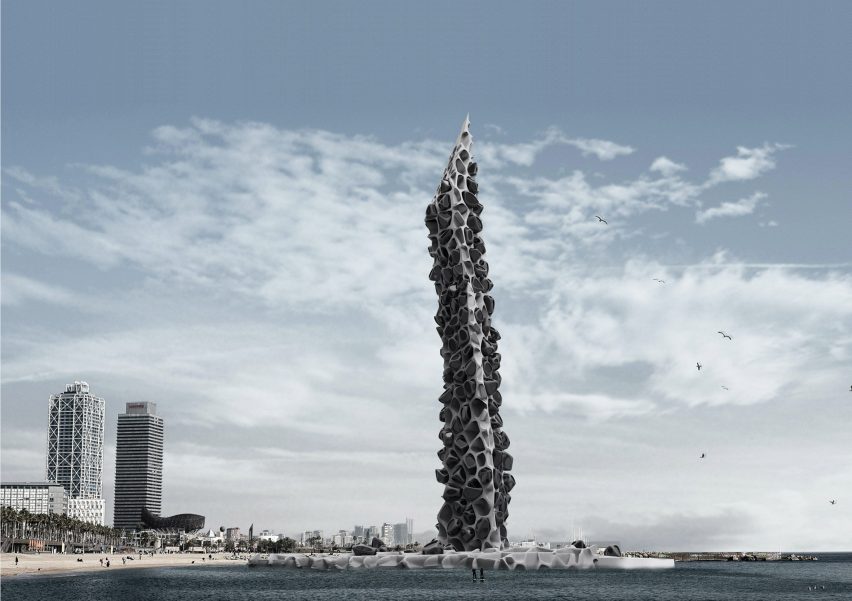
Biodigital tower in Barcelona Seafront for socio-ecological balance by Abdul Harib
"In the 20th century, architect Le Corbusier stated that "the house is a machine for living", and talked about "the functional city" – in the 21st century, professor Alberto T Estévez urgently said that "the house is a machine for activating planetary sustainability", and that "the city will be 50 per cent biological and 50 per cent digital, or it will not be".
"This project, which centres on the construction of self-sufficient towers, involves solving socio-ecological imbalances."
Student: Abdul Harib
Tutor: Alberto T Estévez
Emails: abdulharib[at]gmail.com and boalharib[at]hotmail.com
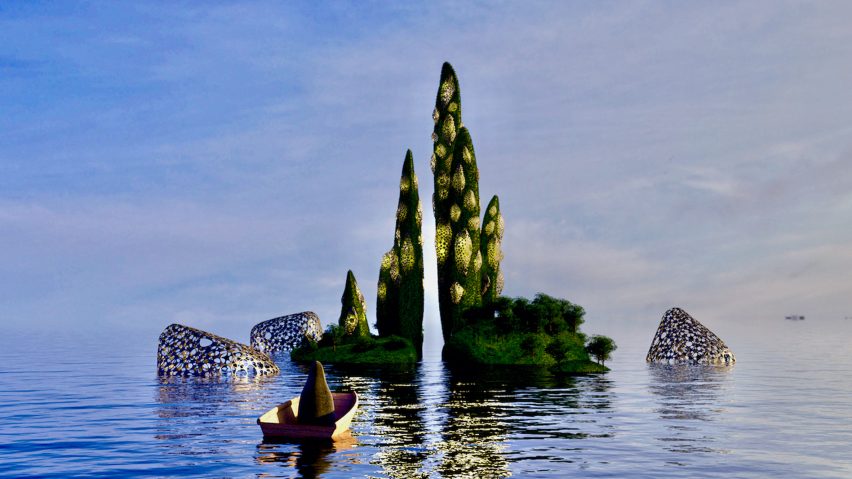
Developing Biodigital Towers by Frank Henderson and Iliya Mela
"This project centred on developing biodigital towers and islands for complex multifunctional use by self-sufficient micro-communities, as a healthy extension of the growing city of Barcelona.
"The towers aim to address the increased need for residential social units in the densest city of Europe, while complying with the integral ecology 17 sustainability development goals of the United Nations, geared towards both social and ecological planetary rebalancing.
"The project sees houses as machines to activate sustainability."
Students: Frank Henderson and Iliya Mela
Tutor: Professor Alberto T Estévez
Emails: frankhendersont[at]gmail.com and melailiya[at]gmail.com
Partnership content
This school show is a partnership between Dezeen and UIC Barcelona. Find out more about Dezeen partnership content here.